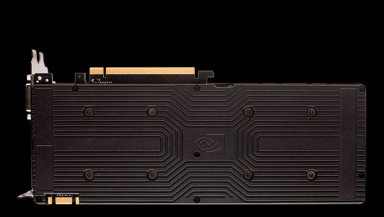
During the Game Developers Conference 2015, NVIDIA unveiled the successor to its GeForce GTX Titan single GPU lineup, the GeForce GTX Titan X. While the company kept all the remaining hardware specifications away from public knowledge, it was revealed that the GPU possesses a whopping 12 GB of GDDR5 video memory, which is the exact same amount on the GTX Titan Z, NVIDIA's current flagship dual-GPU solution.
The GTX Titan Z is equipped with two graphic chips running in unison to provide the best possible gaming performance, even on the 4K resolution. However, both graphic processors incorporated into the Titan Z are based on NVIDIA's Kepler architecture, which is inferior in performance and efficiency compared to the firm's Maxwell architecture, which is the architecture that the GPU of the upcoming GTX Titan X has been processed on.
In addition, NVIDIA's website also states that its dual-GPU graphics card will have a thermal design power of 375 watts, which will require PC gamers to equip their systems with a power supply unit that can deliver continuous wattage of 700 watts, or above. While the power consumption details of the GTX Titan X have not been revealed, its superior architecture would mean it would have a thermal design power that will range between the 225-300 watts mark.
However, in performance terms, the GTX Titan Z would be able to thwart the GTX Titan X due to its 768 memory bus width, higher number of Cuda cores (5760) and a higher memory bandwidth (672 GB/s). Unfortunately, the price tag of the dual-GPU is $3,000, whereas, the Titan X is expected to carry a price tag that will fall in the range $999-$1349. Both products will provide 'out of the box' support for Microsoft's DirectX 12 API.
Even though the GTX Titan Z is a better performer compared to its single GPU counterpart, gamers would have to make a few trade-offs along the way, particularly when the price and power consumption is concerned. In addition, due to the fact that the GTX Titan Z is a dual-GPU, gamers can only purchase two units for a quad-SLI solution whereas gamers can purchase four separate units of the GTX Titan X.













